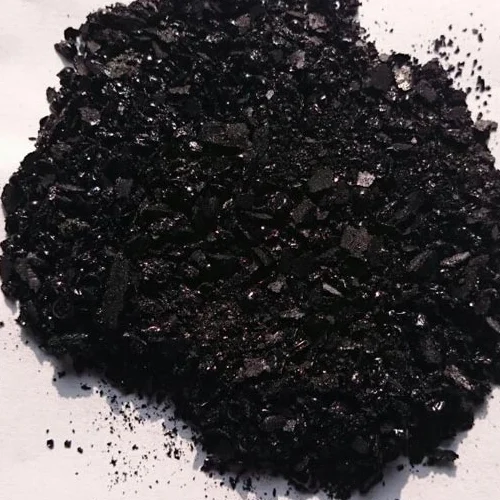indigo dye for fabric factory
The Color of Tradition Indigo Dye for Fabric
Indigo, one of the oldest dyes used for coloring textiles, has a rich history that spans thousands of years and numerous cultures. Its deep blue hue is not just a color but a manifestation of craftsmanship, artistic expression, and cultural heritage. Today, indigo dye is experiencing a renaissance, particularly in fabric factories around the world that are rekindling traditional dyeing methods while integrating modern techniques to meet contemporary demands.
Historical Significance of Indigo Dye
The use of indigo dates back to ancient civilizations. Some of the earliest evidence of indigo dyeing comes from Egypt, where textiles dyed with this striking color were found in tombs dating back to 2500 BC. Similarly, in India, indigo has played a crucial role in the textile industry for centuries. The famous blue dye was derived from the leaves of the indigo plant, Indigofera tinctoria, which has been cultivated extensively in regions such as Gujarat and Tamil Nadu.
Indigo often symbolizes deeper meanings in various cultures. In Japanese culture, for example, indigo dye, known as ai, is not just a color but a representation of craftsmanship and tradition. The Japanese have perfected the art of shibori, a resist-dyeing technique that creates intricate patterns using indigo dye. This cultural significance has made indigo an enduring component of the identity and craft of many societies.
The Indigo Dyeing Process
The process of dyeing fabric with indigo is both an art and a science. Traditional methods involve fermenting the leaves of the indigo plant to extract the dye. This fermentation creates a unique dye vat that allows for a chemical reaction, resulting in the vivid blue color that indigo is renowned for. The fabric is immersed in the dye vat multiple times, and with each dip, it gains a deeper shade of blue. Once the desired color is achieved, the fabric is oxidized by being exposed to air, completing the dyeing process.
In modern indigo dyeing factories, while the essence of the traditional methods remains, advancements have been made to increase efficiency and reduce environmental impact. Factories often utilize synthetic indigo in place of the natural dye, which allows for consistent colors and lower costs. However, there is a growing movement towards sustainable practices where natural indigo is being sourced and processed with environmentally-friendly methods to meet the rising demand for eco-conscious products.
indigo dye for fabric factory

The Modern Fabric Factory
In recent years, the resurgence of interest in indigo has led to a proliferation of fabric factories specializing in indigo-dyed textiles. These factories often employ a combination of traditional and modern techniques, which not only honors the age-old practices but also caters to modern fashion sensibilities. Artisans skilled in the craft of indigo dyeing often collaborate with fashion designers to create unique garments that tell a story of heritage and authenticity.
Furthermore, the trend of 'slow fashion' emphasizes quality over quantity, leading consumers to seek out sustainably-produced indigo textiles. This shift in consumer behavior has paved the way for fabric factories to innovate while ensuring that they respect the age-old traditions of indigo dyeing. By utilizing natural dyes, they contribute to a more sustainable textile industry, reducing the harmful impact of synthetic dyes on the environment.
The Global Influence of Indigo
The influence of indigo dye is not confined to any one region. It has found a place in global fashion, with designers from various backgrounds incorporating this deep blue into their collections. From high fashion runways to streetwear, indigo-dyed fabrics are celebrated for their vibrancy and versatility.
Moreover, educational initiatives are being introduced to preserve the art of indigo dyeing. Workshops and courses are now being offered worldwide, teaching the techniques and history behind indigo and its significance in fabric dyeing. This educational push not only honors the tradition but also inspires a new generation of artisans.
Conclusion
Indigo dye is more than just a color; it is an embodiment of tradition, culture, and craftsmanship. The journey of indigo from ancient practices to modern fabric factories reflects a unique interplay of heritage and innovation. As the world becomes more attuned to sustainable and ethical fashion, the deep blue of indigo remains a beloved hue, continuing to inspire and connect people across cultures and generations. Through the revitalization of indigo dyeing techniques, we not only preserve a vital aspect of our textile heritage but also embrace the future of fashion in a responsible and thoughtful manner.
-
The Timeless Art of Denim Indigo Dye
NewsJul.01,2025
-
The Rise of Sulfur Dyed Denim
NewsJul.01,2025
-
The Rich Revival of the Best Indigo Dye
NewsJul.01,2025
-
The Enduring Strength of Sulphur Black
NewsJul.01,2025
-
The Ancient Art of Chinese Indigo Dye
NewsJul.01,2025
-
Industry Power of Indigo
NewsJul.01,2025
-
Black Sulfur is Leading the Next Wave
NewsJul.01,2025

Sulphur Black
1.Name: sulphur black; Sulfur Black; Sulphur Black 1;
2.Structure formula:
3.Molecule formula: C6H4N2O5
4.CAS No.: 1326-82-5
5.HS code: 32041911
6.Product specification:Appearance:black phosphorus flakes; black liquid

Bromo Indigo; Vat Bromo-Indigo; C.I.Vat Blue 5
1.Name: Bromo indigo; Vat bromo-indigo; C.I.Vat blue 5;
2.Structure formula:
3.Molecule formula: C16H6Br4N2O2
4.CAS No.: 2475-31-2
5.HS code: 3204151000 6.Major usage and instruction: Be mainly used to dye cotton fabrics.

Indigo Blue Vat Blue
1.Name: indigo blue,vat blue 1,
2.Structure formula:
3.Molecule formula: C16H10N2O2
4.. CAS No.: 482-89-3
5.Molecule weight: 262.62
6.HS code: 3204151000
7.Major usage and instruction: Be mainly used to dye cotton fabrics.

